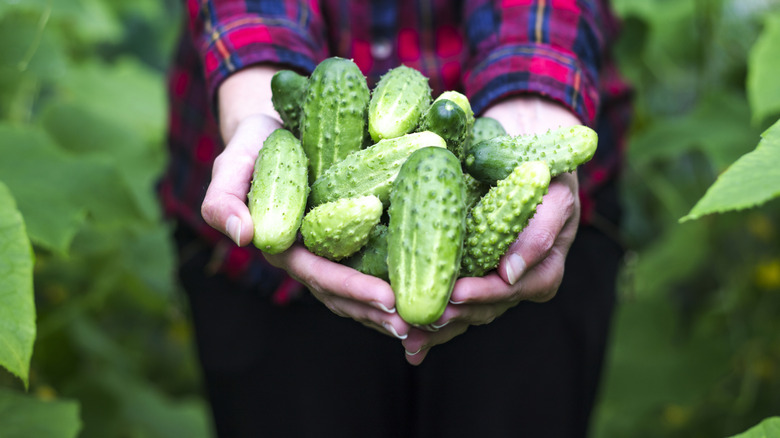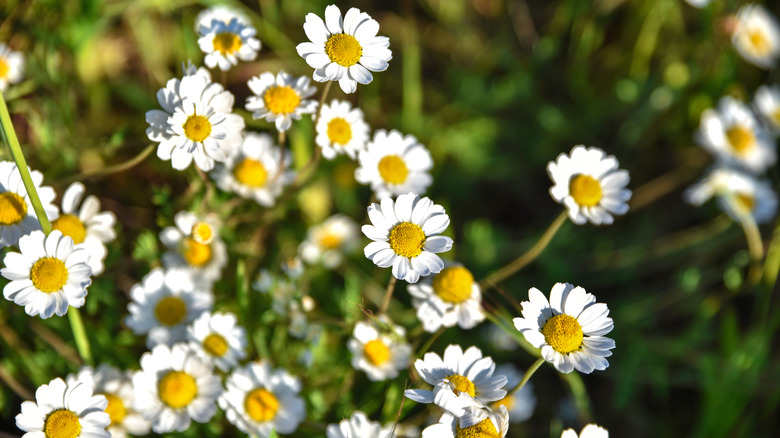The Soothing Herb Your Cucumbers Will Love Being Planted Next To In The Garden
You may have heard the term companion planting, but what is it and how does it benefit your garden? Pairing plants that aid one another's growth is a well-supported idea that helps the garden and the environment. One herb that quietly supports your cucumbers is chamomile (Matricaria recutita). While most gardeners think of it as a tea-time remedy, chamomile offers benefits to your vegetable garden, too.
There's still some debate among researchers over whether the effects of companion planting are rooted in science or anecdote, but many experienced gardeners swear by them. Strongly scented herbs like chamomile can affect the scent profile of a garden, helping to confuse or repel pests that might otherwise target specific plants. Chamomile attracts beneficial insects like hoverflies and parasitic wasps, which prey on cucumber-loving pests such as aphids and cucumber beetles. Chamomile may also encourage faster growth and better taste in your cucumber harvest, a wonderful benefit.
Best of all, chamomile is low-maintenance. It is hardy in USDA zone 4 to 9, and it thrives in the same sunny, well-drained soil that cucumbers love. Plant it alongside or near the base of cucumber plants and it won't compete heavily for space or nutrients, making it an easy companion to tuck into open spots or garden borders. Although there is no concrete science that supports all companion planting suggestions, scientists do agree that biodiversity is the healthiest way to grow any garden, and intercropping chamomile with cucumbers is a great way to practice this technique.
Tips for growing chamomile with cucumbers
For this pairing, chamomile is simple to grow and requires the same care as your cucumbers. You can direct sow seeds at the same time you plant your cucumbers, or begin them indoors and transplant when the soil has warmed. Roman chamomile (Chamaemelum nobile) and German chamomile (Matricaria recutita) are the most common varieties; both attract pollinators and predatory insects. But there is a difference between Roman and German chamomile.
Space cucumbers with enough room to climb or sprawl, and plant chamomile in the spots that receive full sun. Chamomile is also a good companion because of its shorter height; it won't shade out your cukes, and since both thrive in similar conditions, there's no need for extra soil amendments or fertilizer for either plant. Watering needs are the same for both plants; consistent moisture is best, allowing them to dry out a bit between waterings.
Chamomile also has a reputation for being a "plant doctor" in the garden. It can improve the health of neighboring plants by helping prevent fungal issues like mildew, which is a common threat in cucumber beds. While scientific support for this role is limited, there's enough positive experience from home gardeners to make it worth trying. Chamomile makes a good neighbor. Companion planting is better for the environment, and you get the additional benefit of a good cup of chamomile tea straight from your garden!

